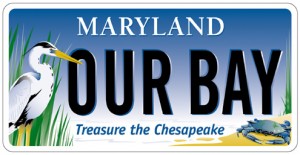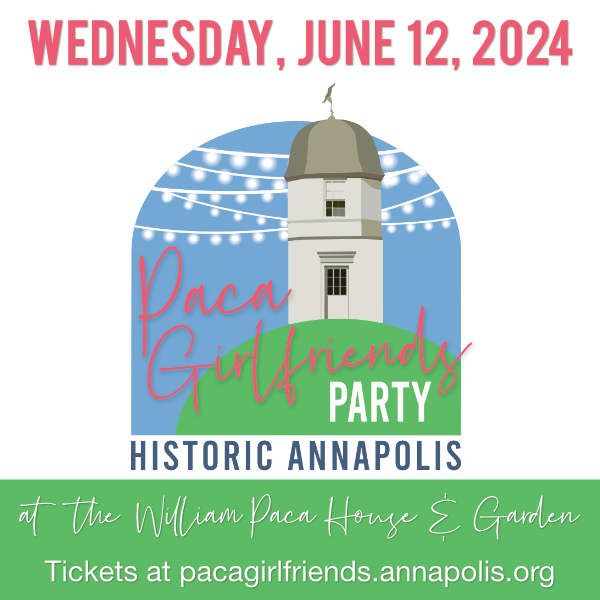 The Chesapeake Bay Trust announced the latest class of 41 young people who will join the 2016 Chesapeake Conservation Corps program. This program, now in its sixth year, was created by the Maryland Legislature and matches young people, ages 18-25, with a variety of organizations for a one-year term of service to improve local communities and protect natural resources. During the upcoming year, Conservation Corps participants will gain valuable on-the-job experience while they work to advance environmental conservation, K-12 education, energy efficiency programs, sustainable agriculture practices, and a host of other environmentally-focused initiatives. Today, 41 Corps participants–the largest class in the program’s history—met their host organizations at Camp Letts in Edgewater, Md., to learn more about their job responsibilities for the upcoming year.
The Chesapeake Bay Trust announced the latest class of 41 young people who will join the 2016 Chesapeake Conservation Corps program. This program, now in its sixth year, was created by the Maryland Legislature and matches young people, ages 18-25, with a variety of organizations for a one-year term of service to improve local communities and protect natural resources. During the upcoming year, Conservation Corps participants will gain valuable on-the-job experience while they work to advance environmental conservation, K-12 education, energy efficiency programs, sustainable agriculture practices, and a host of other environmentally-focused initiatives. Today, 41 Corps participants–the largest class in the program’s history—met their host organizations at Camp Letts in Edgewater, Md., to learn more about their job responsibilities for the upcoming year.
“The Chesapeake Conservation Corps Program provides an excellent opportunity for young people interested in environmental careers to gain valuable on-the-job training that is so vital to long-term employment success,” said Senate President Thomas V. Mike Miller, Jr., the lead sponsor of the legislation that created this program. “Additionally, each Corps participant is contributing greatly to the protection and restoration of our natural resources and the Chesapeake Bay. That is a direct benefit to our environment, to education, to employment, and to our overall communities.”
Since the program began in 2010, the Corps has grown by leaps and bounds: In its inaugural year, 16 Corps participants worked on a variety of environmental initiatives including energy efficiency programs, restoration activities and neighborhood clean-ups, water quality monitoring programs, reforestation projects and job training programs for youth. The program expanded to 21 participants in its second year, and 26 in its third and fourth years, and included 32 exceptional young people this past year who advanced conservation initiatives throughout the region. In 2015, more than 130 applicants applied to be selected for the program, and over 85 organizations applied to be hosts organizations, which included both traditional conservation nonprofits as well as non-environmental organizations looking to add an environmental component to their work.
Due to the continued success of the program, the Maryland Legislature voted during its 2015 session to expand funding for the program which allowed for additional individuals to participate this year. Program funding is also matched by the Chesapeake Bay Trust, with a generous contribution provided by Constellation Energy. This year the Trust added the National Park Service as a funding partner, which allowed the program to expand in Maryland as well as into Virginia and Pennsylvania. The U.S. Fish and Wildlife Service, Arlington Echo Outdoor Education Center, Montgomery County Government, the Neighborhood Design Center, Frederick County Government, and the Maryland National Capital Park and Planning Commission also contributed matching funds for the program.
“Each year between 20-50 percent of participants are hired by their host organizations, which illustrates that the program not only creates employment opportunities but also increases the capacity of participating organizations to further their environmental missions,” said Jana Davis, executive director of the Chesapeake Bay Trust which administers the program. “By increasing capacity for local organizations, we are able to collectively work together to improve our natural resources while also fostering a long-term commitment to environmental stewardship.”
Each Corps participant is provided with a stipend and commits to a one year term of service which begins in August. During the course of that year, Corps participants work directly with their host organizations while also receiving extensive job trainings hosted by the Trust, as well as other service-learning opportunities including grant writing and project management. Of the 41 selected participants, nine (9) will work for organizations in Anne Arundel County; eight (8) will work in Montgomery; seven (7) in Baltimore; five (5) in Prince George’s; three (3) in Frederick; two (2) in Worcester County; and one (1) each in Carroll, Kent, St. Mary’s and Talbot counties. The two remaining Corps participants will work in Virginia and Pennsylvania-based organizations, respectively. The 2016 Chesapeake Conservation Corps class includes the following individuals and their host organizations:
- Patrick Angleton, Elms Environmental Education Center, St. Mary’s County
- Eric Armstrong, Accokeek Foundation, Prince George’s County
- Dorothy Baker, Assateague Coastal Trust, Worcester County
- Natalia Bezerra, Neighborhood Design Center, Prince George’s County
- Elizabeth Brown, Midshore Riverkeeper Conservancy, Talbot County
- James Chang, National Park Service, Anne Arundel County
- Renesha Chiles, Virginia Department of Conservation & Recreation, Richmond, VA
- Emily Cope, William S. Schmidt Outdoor Education Center, Prince George’s County
- Kelly Crabtree, The Green School of Baltimore, Baltimore
- Christopher Davis, United Workers Association, Baltimore
- Leah Davis, U.S. Fish & Wildlife Service, Anne Arundel County
- Jamison Douglas, Parks & People Foundation, Baltimore
- Zachary Flaharty, Susquehanna Gateway Heritage Area, Wrightsville, PA
- Elizabeth Fortson, Blue Water Baltimore, Baltimore
- Sarah Giordano, South River Federation, Anne Arundel County
- Emily Harris, Chester River Association, Kent County
- Erin Harvey, Montgomery County Department of Environmental Protection, Montgomery County
- Michael Harvey, Montgomery County Department of Environmental Protection, Montgomery County
- Patrick Hixenbaugh, City of Rockville, Montgomery County
- Paige Hobaugh, U.S. Fish & Wildlife Service, Anne Arundel County
- Andrew Ireland, The Nature Conservancy, Montgomery County
- Blake Ivey, Alliance for the Chesapeake Bay, Anne Arundel County
- Jessica Love, City of Mount Rainier, Prince George’s County
- Stacy Luskin, Neighborhood Design Center, Prince George’s County
- Louisa McIver, Frederick County Office of Sustainability & Environmental Resources, Frederick County
- Catherine Merbler, Waterfront Partnership in Baltimore, Baltimore
- Angelia Miller, Frederick County Office of Sustainability & Environmental Resources, Frederick County
- Sarah Mitchell, Izaak Walton League of America, Montgomery County
- Amy Moore, Maryland-National Capital Park and Planning Commission Meadowside Nature Center, Montgomery County
- Emily Morrow, Arlington Echo Outdoor School, Anne Arundel County
- John Cabell Neterer, Maryland-National Capital Park and Planning Commission Pope Farm, Montgomery County
- Andrew Pizzala, Chesapeake Bay National Estuarine Research Reserve in Maryland, Anne Arundel County
- Emma Rice, Maryland Coastal Bays Program, Worcester County
- Kellie Rogers, Chesapeake Bay Foundation, Anne Arundel County
- Danielle Staggers, Maryland Department of Natural Resources Park Service, Anne Arundel County
- Angela Trenkle, Maryland Department of Natural Resources Forest Service, Carroll County
- Andrea van Wyk, National Aquarium in Baltimore, Baltimore
- Alexa White, Patterson Park Audubon Center, Baltimore
- Olivia Wondu, Latin American Youth Center, Montgomery County
- Anna Youngk, Arlington Echo Outdoor School, Anne Arundel County
- Hannah Zinnert, Hood College Center for Coastal & Watershed Studies, Frederick County
For more information on the program and for detailed descriptions on the program participants and what they will be doing, email [email protected].
[do action=”blackwall-hitch”/]












































